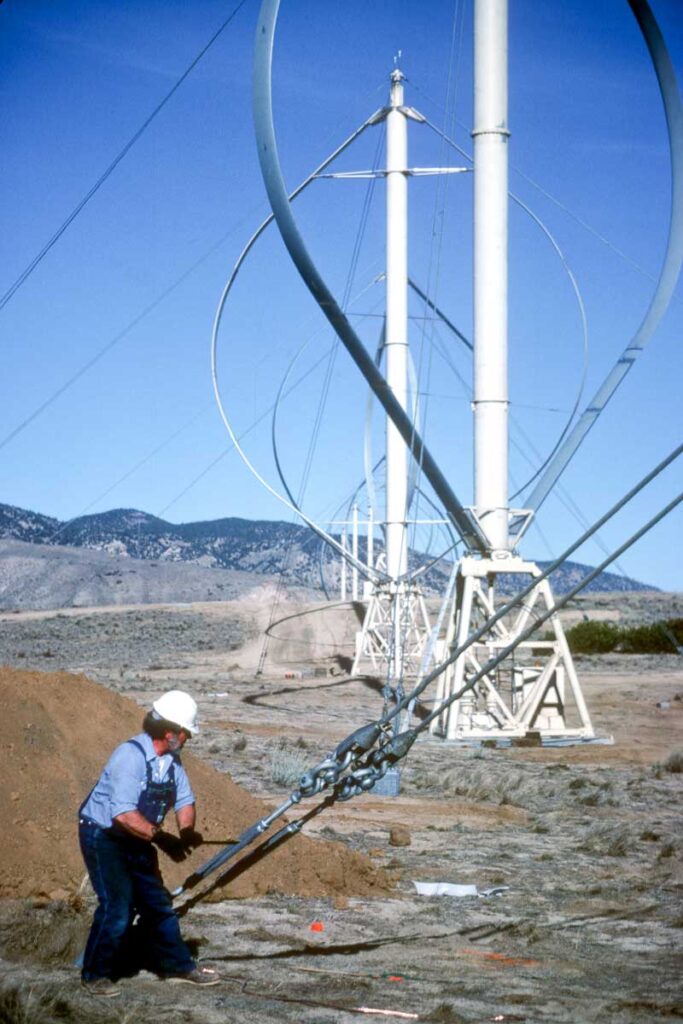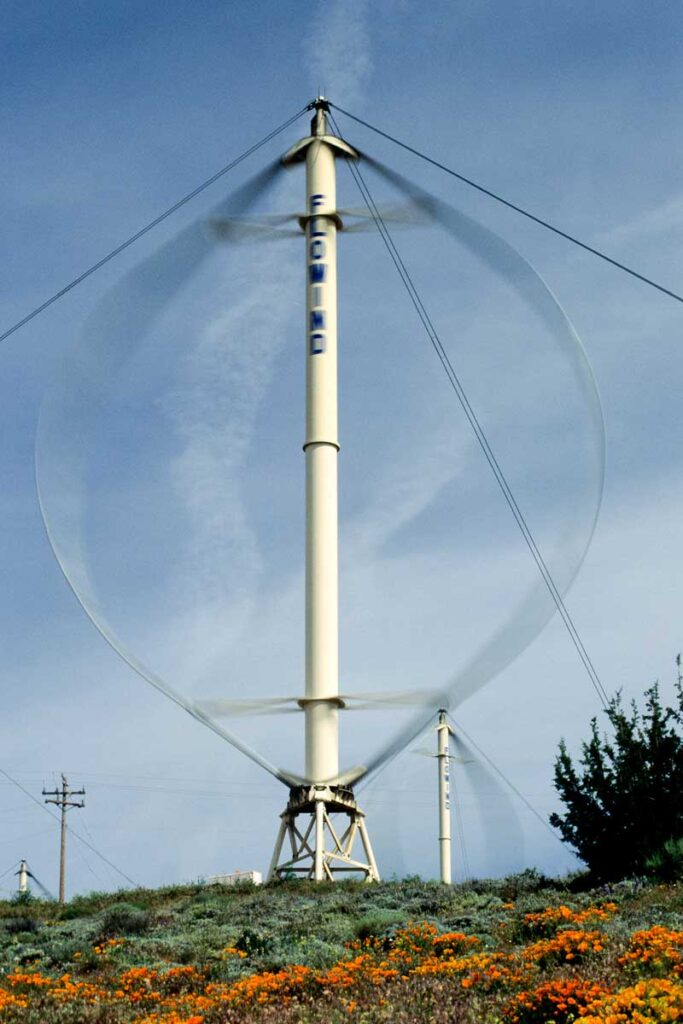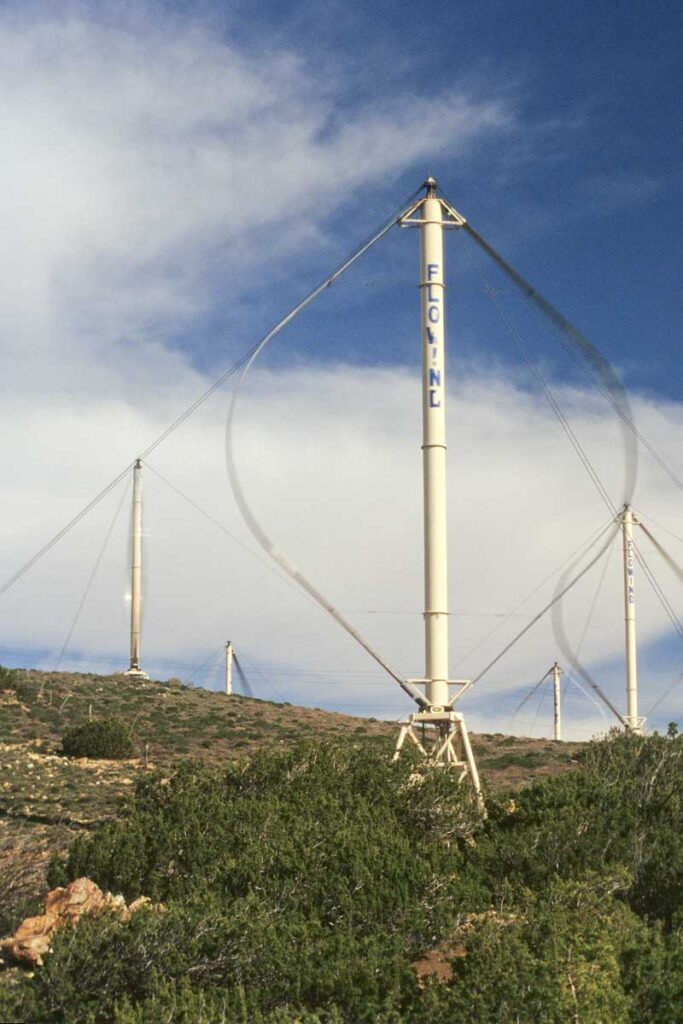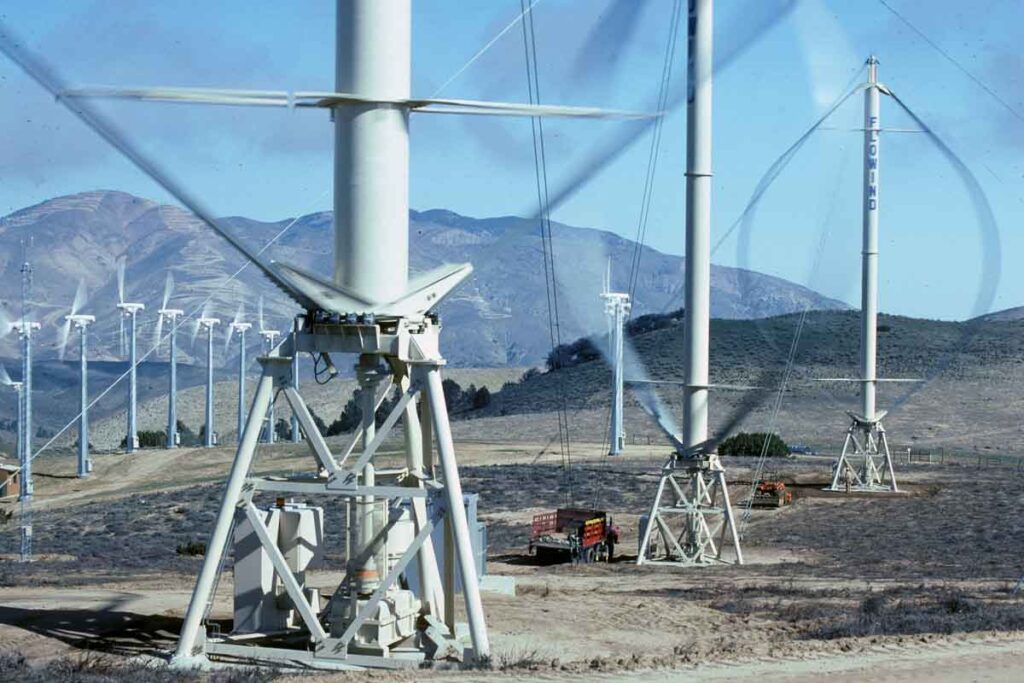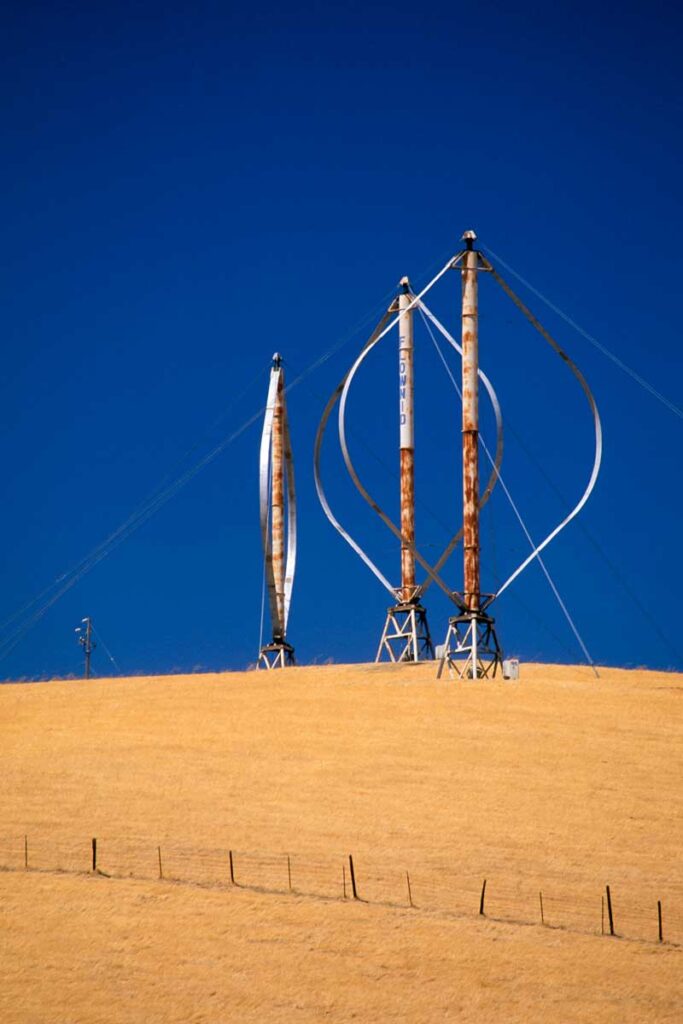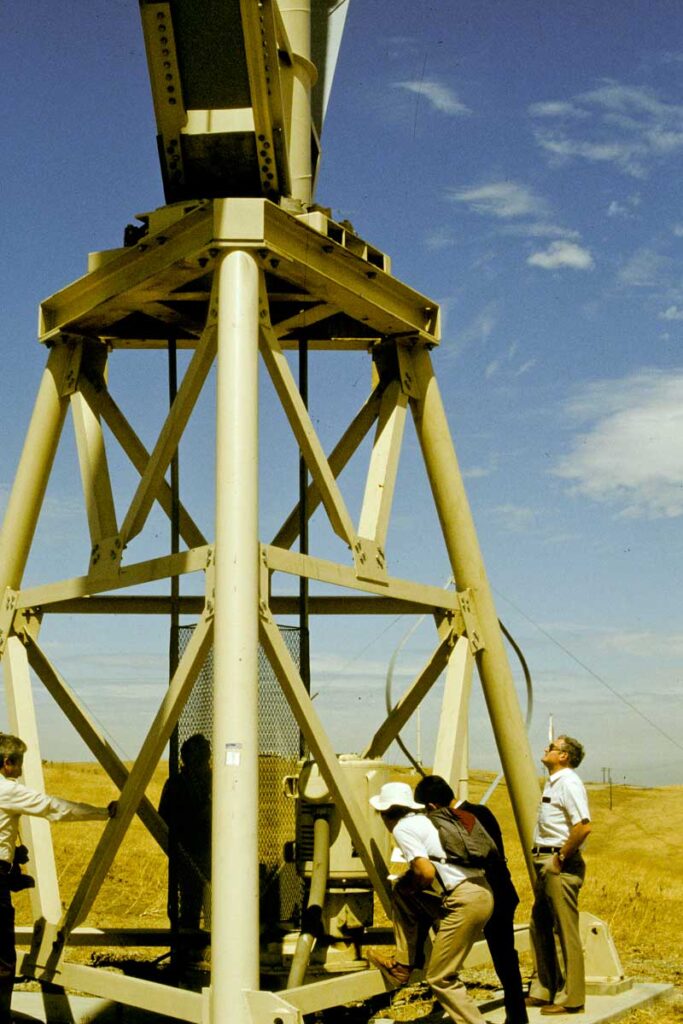Because of my critical articles on Vertical-Axis Wind Turbines, Wind Harvest’s Kevin Wolf contacted me with background on what failed in the industry’s mostly widely deployed Darrieus wind turbine: FloWind.
In the history of wind energy, no company was more successful in deploying Darrieus or “eggbeater” wind turbines than FloWind. By the end of 1985, FloWind, an American manufacturer, had installed 95 MW of its signature product, a two-blade, phi-configuration Darrieus turbine. Some 500 of the machines were installed in the Altamont and Tehachapi passes. In 1987, the company generated 100 million kWh. However, less than a decade later, FloWind was generating one-tenth that amount. By the end of 2004 nearly all of FloWind’s Tehachapi turbines had been removed and sold for scrap.
No company anywhere has come close to FloWind’s accomplishment. Nevertheless, the company failed because its wind turbines failed. The reason for that failure is explained below in the form of a letter from David Malcolm, an engineer who worked on the FloWind turbines, to Kevin Wolf, chief executive of Wind Harvest, a developer of a VAWT using straight blades.
Kevin Wolf, Windharvest
I have/had a fairly long history with Flowind. Back in 1985(?) they made job offers to both me and Lawrence Sheinbein when we worked with Indal Technologies near Toronto. Lawrence (the aerodynamicist) accepted their offer; I did not but I soon got entangled in their structural problems.
Flowind, as you probably know, started with their 2-bladed 17m Darrieus which was a commercial version of the Sandia 17m test machine. They soon introduced a 19m machine which was mostly a scaled up 17m. Both machines had horizontal struts which were probably less than half the maximum radius but played a big role in the structural dynamics and distribution of bending moments in the blade.
Two-bladed VAWTs have problems: the rotation leads to any natural mode having two parts – one perpendicular to the other. This implies that a single mode will involve both “flapwise” motion of the blade (in-plane) plus some “edgewise” blade motion (out-of-plane). The curved nature of the blade helps it carry the flapwise bending but the horizontal struts end up resisting a lot of the edgewise loads.
There was one resonance that involved the edgewise strut motion and which proved to be a critical crossing (at 3P). Our tools and understanding then were not as good as they are now. Another problem was the (in)ability to design a fatigue-proof strut-blade connection.
The strut-blade connection (first on the 17m and later on the 19m) began failing, I think, in the aluminum adjacent to the bolts. This was quite similar to the failure of the Indal 500kW VAWT in PEI (see attached photos) which led to me having to pick up from the field pieces of hardware which I had designed (a sobering experience for any engineer). My old friend Lawrence Schienbein, now chief engineer at Flowind, was having to do a similar job in the Altamont hills, California. He called me and we spent some time (months!) with our heads together.

We did come up with a fix which involved a redesign of the strut-blade connection. The new design did not use any hinge but did include some bonding of added reinforcement plates to the blades (to reduce the bending stresses in the blade) and interference fit bolts that would reduce fretting fatigue at the interface.

By that time the Flowind problem had become a serial one. This implied replacing all the blades and connections on all the 17m and 19m rotors (even blades without existing cracks could already have lost half their fatigue lives). Simple economics were not in our favor.
Incorporating a hinge at the strut-blade connection (to reduce the flapwise/in-plane bending moment) would have been of some help but would not have lessened the edgewise bending which was the main culprit. What would have saved Flowind, in my view, was a third blade. We now better understand the more benign nature of the dynamics of 3-bladed rotors (in both HAWTs and VAWTs).
There you have it.
David Malcolm, dmalcolm@windharvest.com

